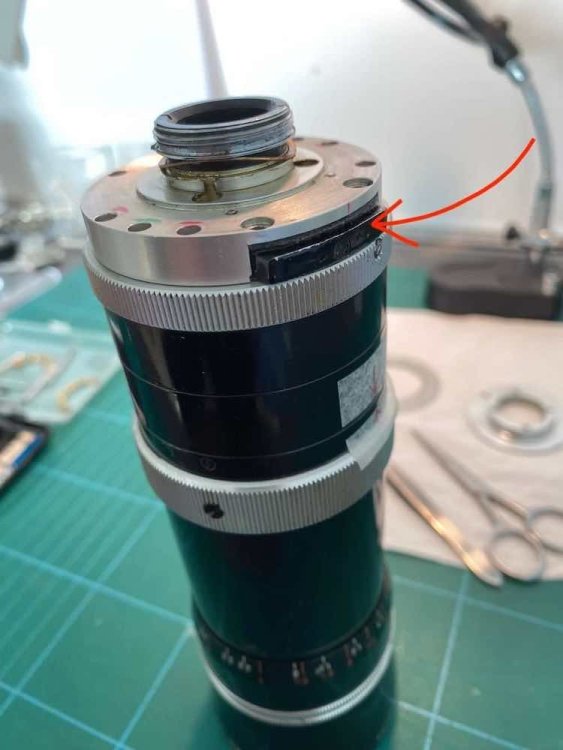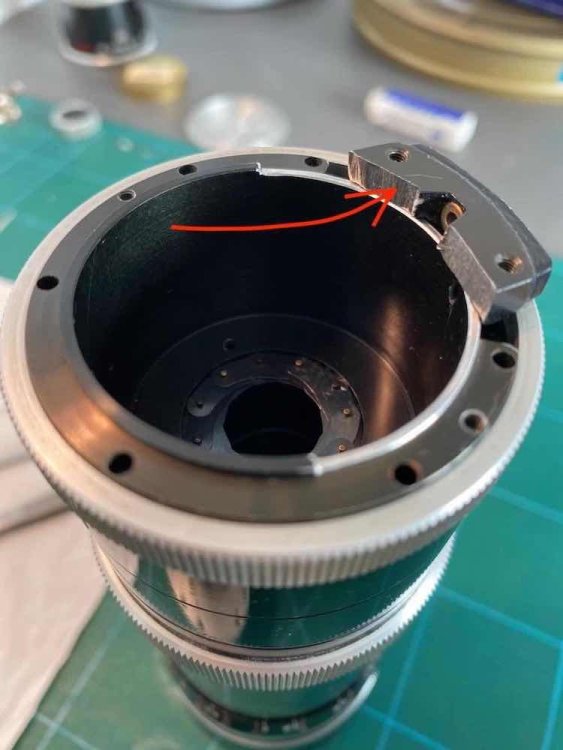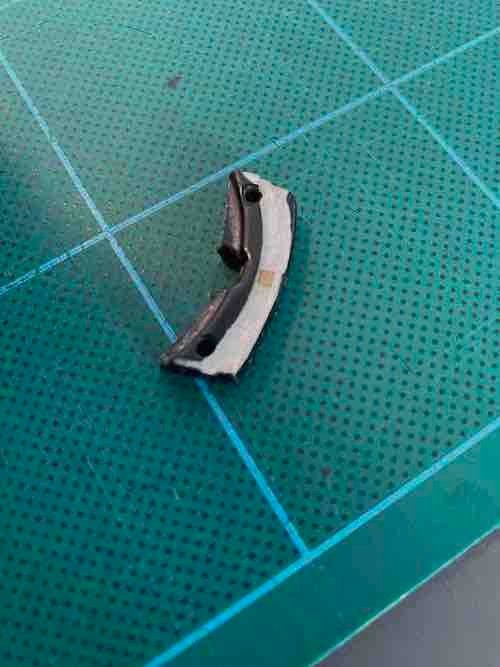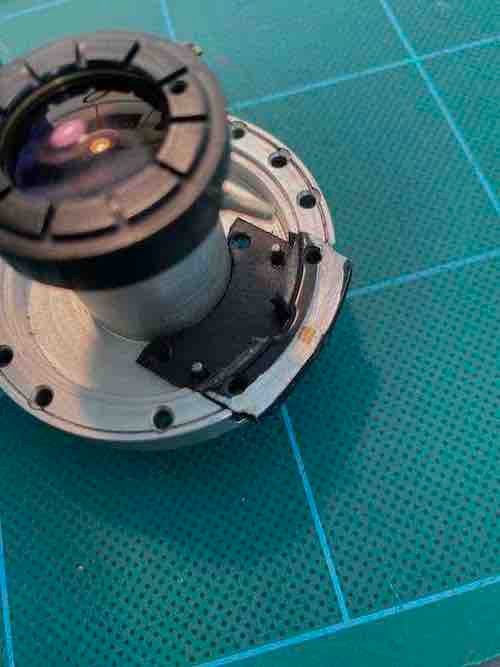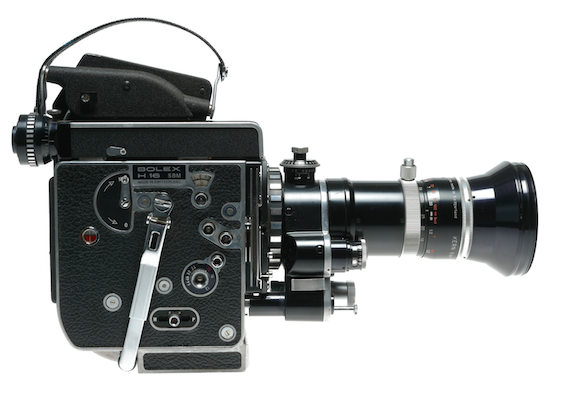
Graham Ellard
Basic Member-
Posts
21 -
Joined
-
Last visited
Everything posted by Graham Ellard
-
Thanks Dirk, and what are the parameters to work within in Resolve to avoid grading a scan for an density and colour balance that can't be achieved when grading a film print from negative.
-
Hi Robert, Thanks - we're pretty new (completely new) to Resolve and LOG scanning - so forgive me but what is an LAD/Marcie?
-
We are trying to fix an intermittently faulty cable between our Bolex ESM and MW Winding Motor. It’s let us down disastrously a few times while shooting, causing a bird’s nest of film in the camera body. We’re pretty sure we've isolated the fault to the section of cable between the ESM and the in-line connector - which then runs on to the WM. This is the end of the cable with the very small two-pin plug. It may be that this section of cable has a small break in it, as we can simulate the fault if we manipulate the cable, but it’s very hard to be exact. The two pin plug on the ESM end is unique to Bolex it seems, and we are very wary of cutting the cable back to remove the break without knowing exactly where it is, because we risk ruining the cable all together. Our problem is finding a replacement. We’ve seen nothing online, but any thoughts would be very welcome - on a replacement or advice on a repair. Thanks.
-
On a forthcoming 16mm film project we will grading our 4K LOG scan ourselves in Resolve. We will be using the resulting movie file only as a preview/screener, and as an offline digital 'cutting copy' from which we will then have our original neg cut (using the EDL we generate from Premier Pro). We will then grade that cut negative (at Haghefilm) and have it printed as a finished 16mm exhibition print. Our question is: What parameters should we work within in Resolve to avoid grading the scan beyond what can be printed from the neg? Or, put another way: What shouldn't we adjust in the scan - either at all, or only to a certain plus/minus - (despite it perhaps making the image look nicer) because those values can't be adjusted at all or as much in the print grading? We'd love to hear others experience. Thanks.
-
Hi, can anyone offer any advise on whether a digital projector (as used in a small scale cinema) will appear with flicker if shot on 16mm film? We've shot from digital display screens (computer monitors) without any problems but are unsure about how digital projection behaves - are there differences dependent on the type of projector LCD, DLP, LED, Lazar? Any advice and information much appreciated. Thanks.
-
Hi, can anyone offer advice about travelling with film stock - both unexposed and exposed 16mm, 250D? We have a lot of experience flying from London to Europe and Japan and have only had a problem once (at Pisa airport) but we understand that new scanners are being used in a lot of major airports and with a trip to Italy planned for February next year are concerned about the risks of x-ray damage. Can anyone advise on the safety of the latest scanners, and/or how we can have our kit hand-checked at security? Thanks.
-
Thanks Gautam, Dejonghe we know and have used, but not Andec - have you had prints made yourself?
-
Hi Kamram, Some, but in Europe among artists working with 16mm, certainly not all. We don't use work prints, we edit in FCP or Premier, then have have a neg cut from the EDL to make a AB reels, for printing out to 16mm. Are there labs you know of that can create 16mm prints or internegs from digital files? Thanks.
-
Thanks Robin, we're wedded to the Bolex, but from other suggestions we are getting closer to a solution that could work for us.
-
Thanks Robin, we're wedded to the Bolex, but from other suggestions we are getting closer to a solution that could work for us.
-
Thanks Alexandre, this is very interesting. You're thinking we could use the top plate to attach the inverted camera to the tripod plate? We did know about the reverse motion effect, in fact a friend shot reverse action, then inverted the filmstrip for an upside down image - but using 2 perf, which we won't be. Thanks again!
-
That's a great help, thanks Gautam!
-
Thanks for the suggestion. With a drive motor, 400ft mag. and winding motor, the Bolex does become pretty heavy, so hung below rather cantilevered outwards is probably the best solution. But as you say, it could be very hard to get to the eye piece!
-
Thanks Gautam, that's a new one to us, we'll get in touch.
-
Thanks, we're familiar with Dirk - we'll try him again.
-
This may sound like a daft idea but we want to shoot a series of scenes, on 16mm film, using a Bolex RX5, upside down. It's important that we don't rotate the image in postproduction, we want to have the inverted image on negative as ultimately we will be printing out to film. We can see two approaches - we invert the camera, which would not be impossible but would need a complicated tripod head. Or, we use a lens that will invert the image. We'd welcome any suggestions and/or advice. Thanks.
-
Hi, we work in 16mm film. The negative cutter we have worked with for many years in the UK has retired, and we are trying to find someone who still does this. We know of Matthew Wagenknecht in Michigan and Andy Pratt, but does anyone know of a neg cutting service in Europe? We'd welcome any leads - thanks.
-
We've been given a Vario Switar 86mm Zoom. Cosmetically it doesn't look great, and the aperture and focus were very stiff. Having dismantled it, cleaned it and begun to reassemble it I'm really puzzled by one of the parts. I haven't been able to find any references or images online that tell me what it is or what its function is. It looks as if it has been machined and modified in some way, like a customisation. Plus, having very carefully reassembled the iris assembly and don't understand how the aperture ring engages with with the iris assembly. The ring runs smoothly but is not connected to the iris assembly 'tube' in anyway, and I can't see how it can be. Maybe there was a missing part originally, maybe the mystery part has something to do with it. I'm baffled, and would wlecome any thoughts, suggestions, or advice. Here are some pictures that show the part in place, separately and the iris assembly in place, with and without the mystery part. Thanks!
-
Bolex SBM - Fitting a Vario Switar 86 Zoom
Graham Ellard replied to Graham Ellard's topic in Lenses & Lens Accessories
Thanks Aelxandre, Todd, That's very helpful. So there are SBM specific zoom lenses with bayonet mounts. The idea of machining the ring on the lens sounds daunting, but perhaps... Thanks again! -
Bolex SBM - Fitting a Vario Switar 86 Zoom
Graham Ellard replied to Graham Ellard's topic in Lenses & Lens Accessories
Thanks for your response JL. We've seen numerous images of an SBM with a this same zoom lens fitted, so this is confusing. We have the c-mount to bayonet adaptor which allows us to use our other c-mount lenses on the SBM. It's this adaptor that doesn't work for the Zoom. -
Bolex SBM - Fitting a Vario Switar 86 Zoom
Graham Ellard posted a topic in Lenses & Lens Accessories
Hi, we recently acquired a Bolex SBM, to use along side our Bolex RX5. We have a c-mount adaptor and can use all our existing lenses with the SBM - except the Zooms (we have the Vario Switar 86 standard and the 86 OE). The c-mount adaptor is fine for all our primes, but the diameter of its concave depression is too small to allow the Zoom lens thread to reach and engage with the adaptor thread. Clearly there must be a way to fit these lenses to an SBM, but we can't find any references to another type of adaptor. We have seen references to one with a type of cover plate over the bayonet 'notches' for security when using heavier lens, but that doesn't address the more fundamental issue we're facing. We'd welcome any advice - the spec of the adaptor we need (and likely sources), whether there any other work around, or anything helpful really! We need to use both cameras for a project soon, each fitted with a zoom lens, and need a solution fast. Thanks.


